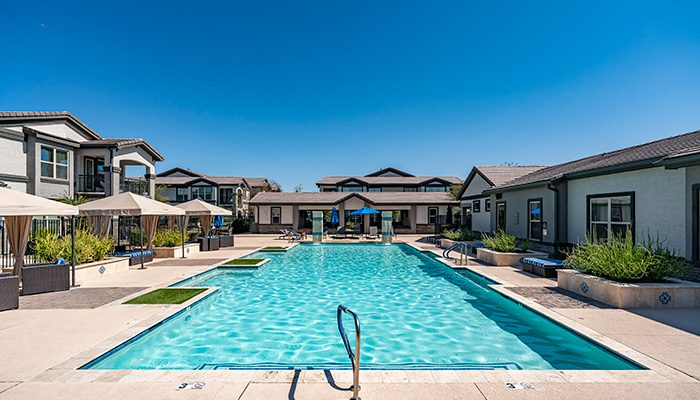Whether you’re moving across town or the country, it is ideal to have a plan when looking for a new place to live. Start your quest about two to four months in advance of your desired move-in date. Watch the latest listings and be ready to pounce if something new and enticing appears – others may feel the same way!
Tips to enhance your search
Embrace the experience. After all, you’re about to start a new chapter in your life, one undoubtedly filled with new adventures and possibilities.
Here are some valuable tips and insights to help you help you make informed decisions. You can put these ideas to use whether you are a first-time renter or experienced in the process. Use this PDF checklist if you’d like.
1. Determine your priorities
Distinguish between a must-have and a would-like-to-have. There’s a difference between what is essential and what would simply be nice to have.
Key considerations include:
- Location – proximity to work, school, and leisure-time activities
- Parking and/or proximity to public transportation
- Number of bedrooms
- Sound transmission
- Safety
Location – Consider proximity to work and the activities you enjoy. Do you want to live amid the excitement of the city center, or do you prefer a more sedate neighborhood? Get a feel for the neighborhood by using Google Earth. Use the icons in the lower right to get 3D and street views.
Parking – Vehicle owners will want to know if there is a parking lot or garage on the premises. If not, determine if street parking is reasonably available. Commercial parking is an option, but it can get expensive.
Sound transmission – How do you feel about sounds emanating from your neighbor’s place? Walls can range from the “paper thin” variety to very quiet, double-walled construction. Will neighbors also live above you? If so, think about how sound travels between floors.
Safety and security – Explore the security for each unit and for the community as a whole. Are public areas like hallways and parking lots well-lit? Modern smart locks may offer an added measure of protection. With a landlord’s permission, you might even consider installing your own.
2. Consider amenities you’ll value
Luxury apartment communities separate themselves from the competition with amenities that tenants truly value. Ideally, you’ll want to match your interests with what’s offered. A pool may be more valuable to some than to others. The same goes for a state-of-the-art fitness center.
Examples of popular community-wide amenities include:
- Resort-style pool
- Fire pit
- Outdoor kitchen and grilling stations
- Fitness center
In-unit amenities may include:
- Stainless steel appliances
- Plank flooring
- Stone countertops
- Washer and dryer
- Patio/balcony
Communities catering to pet lovers may offer wash stations and onsite dog parks. Those catering to cyclists may offer bike storage and a repair area.
Finally, luxury apartment developments may offer amenities that offset potentially higher rents. On-site parking and a fitness center are two prime examples.

3. Establish a budget
Consider rent-to-income ratios. Thirty percent is a common standard, although average ratios range across markets. In the most expensive housing markets, this ratio might exceed 40%. Los Angeles and New York City are prime examples. At the other extreme, places like Champaign, IL, and Norman, OK, average 15%. Many urban areas average 25-35%.
Renters have both one-time and recurring costs. Examples of the former are the application fee and security deposit. Recurring costs include the rent, utilities, and renter’s insurance. The latter offers financial protection against theft, fire, and potential liabilities.
4. Perform your due diligence
How do residents feel about their apartment community? Check out online reviews by Google, Apple, etc. Opinions matter.
Ninety-three percent of respondents to one survey said they read online reviews. Almost two-thirds were willing to pay more for housing with positive reviews. Consider the peace of mind that comes with working with a reputable landlord who is highly thought of.
5. Set up an in-person or virtual tour
Arrive promptly for an in-person tour, and be ready with your questions. If you can’t physically inspect properties, look for communities offering virtual tours. Is the property manager/landlord embracing any of the latest smart apartment trends?
During a walkthrough, attention to detail is a must. After all, this will be your home! Consider the condition of floors, walls, and trim. Are there signs of excess wear and tear? Do windows, drawers, and cabinets open and close with ease? Are there any unusual odors?
Ask how maintenance requests get handled. Look for a streamlined process. Is there a safe, efficient means for completing package deliveries? Get a sense of what monthly utility costs might run. Finally, if possible, get a better feel for the property by visiting at different times of the day.
6. Decision time
You’ve found a place, and you are ready to sign a lease. The most common lease term is 12 months, although you’ll also find other lengths like six or 24 months.
Keep in mind that a lease is an important legal document. Amid all the excitement, it is all too tempting to give the lease only a cursory glance. After all, reading legal documents is not something most folks relish. Nonetheless, a careful reading of the lease is vital.
As you review the lease, note which utilities are included and which are not. If you are a pet owner, account for both one-time and recurring fees.
Don’t hesitate to ask questions. For example, what is the penalty for a late rent payment? Is there a grace period? In every instance, make sure important details are in writing. Don’t rely on verbal assurances.
Luxury Apartment Homes from Draper and Kramer
Draper and Kramer is a full-service real estate firm founded in 1893. D&K manages luxury apartment properties in major metro areas like Chicago, St. Louis, Dallas/Fort Worth, Austin, Denver, and Phoenix. At Draper and Kramer, desirable amenities are the norm rather than the exception. For example, The Wright is an amenity-rich community in Centennial, CO. There’s a large, resort-style pool, fire pit lounge, and outdoor kitchen replete with grilling stations.
Chicago’s River North neighborhood is home to Grand Plaza and its 50,000 sq ft of community amenities. There’s an outdoor heated pool, outdoor kitchen, and dog park. Exercise-minded residents benefit from a fitness center, running track, and basketball court. DK Riata is conveniently located in the Tech District in Austin, TX. It offers a poolside fire pit, 24-hour fitness center, climbing wall, and much more.
Don’t hesitate to take advantage of D&K’s virtual tours. For example, check out this 360-degree tour of 1130 South Michigan, a premier luxury apartment community in Chicago’s South Loop, near the Museum Campus. Browse D&K’s full selection of apartment homes here.

From setting priorities to embracing amenities, embark on your journey armed with insights for a seamless search. Navigate the rental landscape with confidence and find your perfect match!